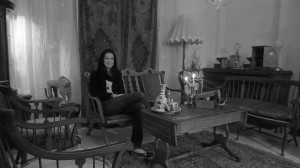By Susan Modaress.
From the soaring majesty of the columns of Persepolis to the lacy stonework mosques and palaces that dot the countryside, to mosaic tile-work as intricate as cloisonne, to rugs that glow like silken jewels, Iranians have long appreciated beauty. Food is not just dished out – it is artfully and attractively arranged. Beauty is praised in poetry and literature – Hafez, Omar Khayaam, Rumi and Ferdowsi. Traditionally, every Persian bride was given a haft qalam – a cosmetic kit containing the seven essential items believed necessary to make her more attractive.
Today Iranians continue to take a special interest in both their personal appearance and their surroundings, which at times has surprised the Internet. Tehran, which has, for some time, been known as the cosmetic surgery capital of the world, is also quickly becoming a fashion and interior design center.
As Nazgol Fatemi, a Tehran based Interior Designer puts it, “I think the cosmetic surgery boom that began around ten to fifteen years ago [in Tehran] and is still going strong – especially in the area of rhinoplasty or nose jobs, illustrates how we began to focus on improving our faces. And from there, we branched out to the point to where almost all our friends got Botox injections and fillers, while the men were getting hair implants. Everybody wanted to look better. Then from there, we went to the clothing. We’ve been very creative with the designs of our manteaus and jewelry to make us more attractive.” From there, as Nazgol pointed out, it was a small step indeed to interior design.
“So now,” she added, “our faces are pretty, our clothes are beautiful and we are ready to socialize with our friends. In our culture, it’s very common to invite people into our homes, which, in turn, calls for a beautiful interior, and that is the reason why I think our furniture and interior design business has taken off the way it has. There is a definite demand for it.”
However, despite the obvious demand, opening a shop or boutique catering to fashion or interior design is a daunting task in modern Tehran. There are numbers of obstacles to overcome, not the least of which are managing the high overhead while getting the business off the ground and the legal red tape involved in opening the shop in the first place. As Nazgol observed, “opening and running a store is not an easy thing to do. First you have to rent a place and often the rent is too high. Next, you have to obtain many permits, which can be oppressively complex.”
Many women like Nazgol, circumvent those obstacles altogether by staging private showings, often in the comfort of their own home. “There’s an additional advantage to opening a private showroom – it allows you to handpick your clients”.
Most costumers eagerly seek invitations to these showings and word-of-mouth recommendations, where they can relax with their friends, while leisurely shopping. “People want an opportunity to get together and socialize,” Nazgol pointed out. “And when you consider that the only places in town in which they can do so are coffee shops and restaurants, you realize that there is a definite need for a different type of venue. Exhibitions offer a completely different, private environment in which people can look at the unusual and unique pieces being offered, while getting together with their friends and meeting new people with similar interests,” she added, maintaining that from the customers’ point of view, this was an additional reason for the growing popularity of the trend. “The showings are fun – particularly in the Spring, around the time of Persian New Year, when there is usually an all-round festive atmosphere and Iranians buy new clothes for themselves and new furnishings for their homes in order to make them more attractive for guests”.
Nazgol agrees that this year as Norouz, the Persian New Year approaches many in the country are struggling financially, mainly due to years of Western imposed economic sanctions. Iran’s official rate of inflation stands at 37 per cent. The official unemployment is at 10.3 per cent, according to Iran’s National Statistics Center. “The showrooms aren’t as crowded as they usually were, around this time, but I have no complaints, we get by.”
Nazgol stresses that her business isn’t always about making sales. “Because I have a private showroom, many of my clients are people I know, so when I have an exhibition, especially around Norouz it’s also a chance for everyone to come and catch up, before the 2 week holidays starts”. Traditionally Nowruz is also a time of private celebrations, dinners, and visiting family and friends.
The business has more or less been been a win-win situation for everyone involved. Clever Iranian women have assessed the economic downturn and to some degree made it work for them, and in many cases provide a supplementary income for the household.
“In some ways they’ve transformed a drawback into a benefit — not only for themselves and their customers, but also for aspiring young designers, who might otherwise never have the chance of showing their creations to a paying public, while the customers have a nice afternoon out with friends, complete with entertainment [the showing] and often, refreshments.”
Nazgol’s showroom resembles a small museum, filled with Persian and European furniture as well as some pieces from Iranian contemporary artists, but it’s also very comfortable and inviting. I did have my eyes on a clock sitting on the fireplace mantel, but I didn’t buy it, which was fine. After all I’d been invited to spend the afternoon with my good friend.



